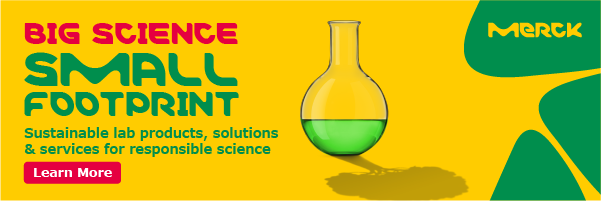Life Sciences
Managing the triple threat - how Life Sciences can build pandemic-ready supply chains 16th August 2020
By Bill Dubois, Director of Product and Marketing Content, Kinaxis

Bill DuBois, Director of Product and Marketing Content at Kinaxis, demonstrates how the normal supply chain management issues of working in a highly regulated environment with products that have limited lifespans and the consequent need to supply products to patients quickly have been exacerbated by the current COVID-19 crisis and explains how this ‘triple threat’ can be managed for successful product delivery through ‘pandemic-ready’ supply chains.
Supply chain planning in life sciences has always been complex. It is a highly regulated sector; pharmaceuticals products typically have limited life spans, and supply chains are often based on functional silos. Planning cycles can sometimes extend over 5-10 years. Excess inventory can also be a problem but the overriding concern is getting products quickly out to end users to keep them well.
These issues are exacerbated by the current crisis. This is no single demand spike. COVID-19 has been disrupting supply chains for months. In the US, as early as February, Senator Josh Hawley warned: “The coronavirus outbreak in China has highlighted severe and longstanding weaknesses in our medical supply chain. This is more than unfortunate; it’s a danger to public health.”
Certainly, the pandemic has raised serious questions of life sciences supply chains globally. Here are three main areas to consider as we navigate uncharted territory:
# 1 Demand is volatile
We have seen spikes in demand around key products such as ventilators, masks, gowns and test kits. There is also a need to hurry through therapeutics and vaccines as well as temporary testing and hospital facilities.
At the same time, there are demand slides. At the outset of the pandemic we saw an initial run on medicines which has now subsided. Today, with travel limited and people self-isolating, the items seeing demand cliffs are extensive. This, coupled with spikes in demand, make current plans and forecasting methods of little value. Businesses will need to have good visibility across the chain to see the real picture on the ground and they will need to have tools in place to enable them to adjust their approach accordingly.

‘Pandemic’-ready supply chain systems ensure worldwide medical product supply.
#2 Supply shortages are inevitable
The life sciences supply chain is struggling to deliver medications to patients across the world. Moreover, panic buying of medicines directly related to the symptoms of COVID-19 has led to shortages in pharmacies. Supply from manufacturing facilities in China has been hit hard and is only now beginning to recover and India had export restrictions in place on 24 active pharmaceutical ingredients (API) and formulations for a month from early March to early April.
Both scenarios contributed to supply chain delays and dealing with such disruption is not easy, longer lead times being inevitable. And it is not straightforward to identify and switch to alternative suppliers. There would need to be a review of contractual liabilities, quality issues or regulation impacts.
# 3 Recovery is an unknown
It’s anybody’s guess when things will return to normal. The unknown is the biggest difference between the COVID-19 pandemic and other major supply chain disruptions such as hurricanes and tornados, for example. With COVID-19, it is not one problem and there is no end date and supply chains must continue to deal with the normal complexities as well as issues like Brexit, tariffs and ongoing weather events. This is on top of an ongoing global crisis that appears to be here for the long-haul.
Managing the triple threat
Response and risk management will be a hot topic in boardrooms moving forwards as companies take lessons learned to up their supply chain response processes. It is vital that businesses and their supply chains are able to rapidly address the challenges of the ongoing crisis. As supply chains focus on a response, surprise is the new norm. It seems like things are changing daily, even hourly, but that does not negate the importance of planning.
A prerequisite for a solution will be strong collaboration capabilities. Collaborating at the speed needed to respond to today’s pandemic is predicated on the assumption you have a single place to collect data, simultaneously execute multiple supply chain functions, and collaborate across the globe. Having a single source of truth that everyone can rely on is key. Planning, responding and risk management processes will need to ask and answer multiple questions at lightning speed, they will therefore have to have good visibility across the supply chain and work with data they can rely on.
The more unknowns there are, the more questions there are for the supply chain. What if regulations change? What is the impact on delivery, revenue and margin? What if a supplier is not back online for another two months or so? You need to be able to run different scenarios, analyze their likely impact, make sure you get answers that you have confidence in, often and fast, and share them for collaborative resolution.
‘Pandemic-ready’ supply chains
Coming out of recovery there may be new requirements placed on the life sciences supply chain. There will be new visibility requirements, for example. The Sarbanes-Oxley Act of 2002 laid down requirements on how US companies reported financials. Moving forwards, we are likely to have something similar for reporting on the supply chain.
Health officials across the world will be looking for visibility of details of manufacturing capacities for essential drugs and devices to protect vital medicines and manufacturers will need to report on imminent shortages of life-saving medical devices to the relevant authorities. This may require life sciences companies to bring together supply chain data into a single source and turn that data into information that could stand up in court.
Complex issues around demand volatility, supply constraints and recovery dates represent serious challenges for any supply chain manager across life sciences. Hopefully the word ‘recovery’ will generate some optimism. History teaches us about the resilience of humanity and its endeavours. In the meantime, we can ‘pandemic ready’ our supply chains so we become experts at response and risk management and take the decisions in the boardroom that help drive a positive future.
Author:
Bill DuBois has worked for more than 20 years with Kinaxis in a number of roles including his current position as Director of Product and Marketing Content. Prior to his move to Marketing, DuBois was a Senior Business Consultant providing pre-sales support to the Kinaxis sales team. This included developing and delivering ‘stand-out’ product demonstrations, delivering ROI analysis and conducting pilot projects for prospective customers.
Prior to joining Kinaxis, DuBois gained 12 years of manufacturing, supply chain and ‘Lean’ experience while with Boeing of Canada. He holds APICS CPIM certification and, as a qualified APICS instructor, has developed and delivered APICS courses in material planning, master scheduling, capacity management and just-in-time. He has also developed and delivered Lean education and training packages for all levels of personnel.
DuBois studied Electronics Technology at Algonquin College in Ottawa, Ontario, Canada and is the host of Canada’s Stevie Award-winning Late Late Supply Chain Show.
Further information



